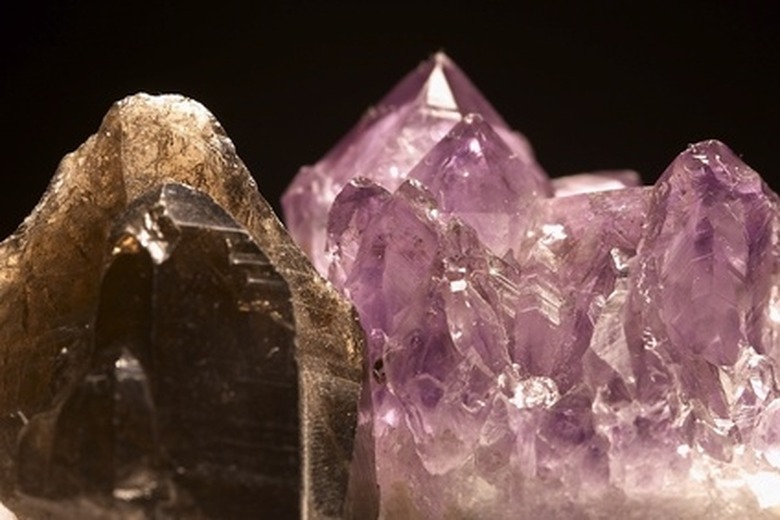How To Make Crystals With Bluing
Growing crystals is a fun and educational project that kids enjoy. As the water from the solution evaporates with the help of ammonia, the salt crystals begin to form around the particles left by the bluing. Food coloring adds to the beauty of the forming crystals that appear to grow out of the porous material of the coal–which allows the liquid containing bluing and salt to be drawn up in a capillary action.
Preparing the Base
Step 1
Break up several pieces of coal or charcoal briquettes with a hammer. Pieces of about one inch work well.
Step 2
Soak the pieces in water in a small basin for three to five minutes.
Step 3
Remove the pieces and layer them in the glass pie plate.
Preparing the Solution
Step 1
Measure three tablespoons of ammonia into the jar.
Step 2
Measure six tablespoons of bluing into the jar.
Step 3
Measure three tablespoons of non-iodized salt into the jar.
Step 4
Stir carefully with the wooden spoon until thoroughly mixed and the salt has dissolved.
Combining the Two
Step 1
Pour the liquid solution slowly over the coal until it is all covered.
Step 2
Add two tablespoons of water to the empty jar and swish it around to remove any remaining chemicals. Pour this in the pie plate.
Step 3
Place drops of food coloring randomly over the coal.
Step 4
Sprinkle two tablespoons of salt over the top of the saturated coal.
Step 5
Place the dish in a location where it is safe and undisturbed. After 48 hours, add an additional mixture of two tablespoons each of ammonia, bluing and water. After another 24 hours, repeat this step. It takes between two days and two weeks for crystals to grow.
Things Needed
- Coal or charcoal briquettes
- Hammer
- Small basin
- Distilled water
- Glass pie plate
- Glass jar
- Plastic measuring spoons
- Ammonia
- Bluing
- Non-iodized salt
- Wooden spoon
- Food coloring
TL;DR (Too Long; Didn't Read)
If you can't find liquid bluing, powdered bluing may be substituted as long as it is mixed with distilled water in a 1 to 1 ratio.
Warning
Crystals are very fragile and should be kept away from animals to avoid breakage. The chemicals used are dangerous to humans and animals if ingested or splashed in eyes or on skin. Safety glasses and rubber gloves should be worn when pouring ammonia and bluing.
References
Cite This Article
MLA
Webster, Sandra. "How To Make Crystals With Bluing" sciencing.com, https://www.sciencing.com/make-crystals-bluing-5615085/. 24 April 2017.
APA
Webster, Sandra. (2017, April 24). How To Make Crystals With Bluing. sciencing.com. Retrieved from https://www.sciencing.com/make-crystals-bluing-5615085/
Chicago
Webster, Sandra. How To Make Crystals With Bluing last modified March 24, 2022. https://www.sciencing.com/make-crystals-bluing-5615085/
